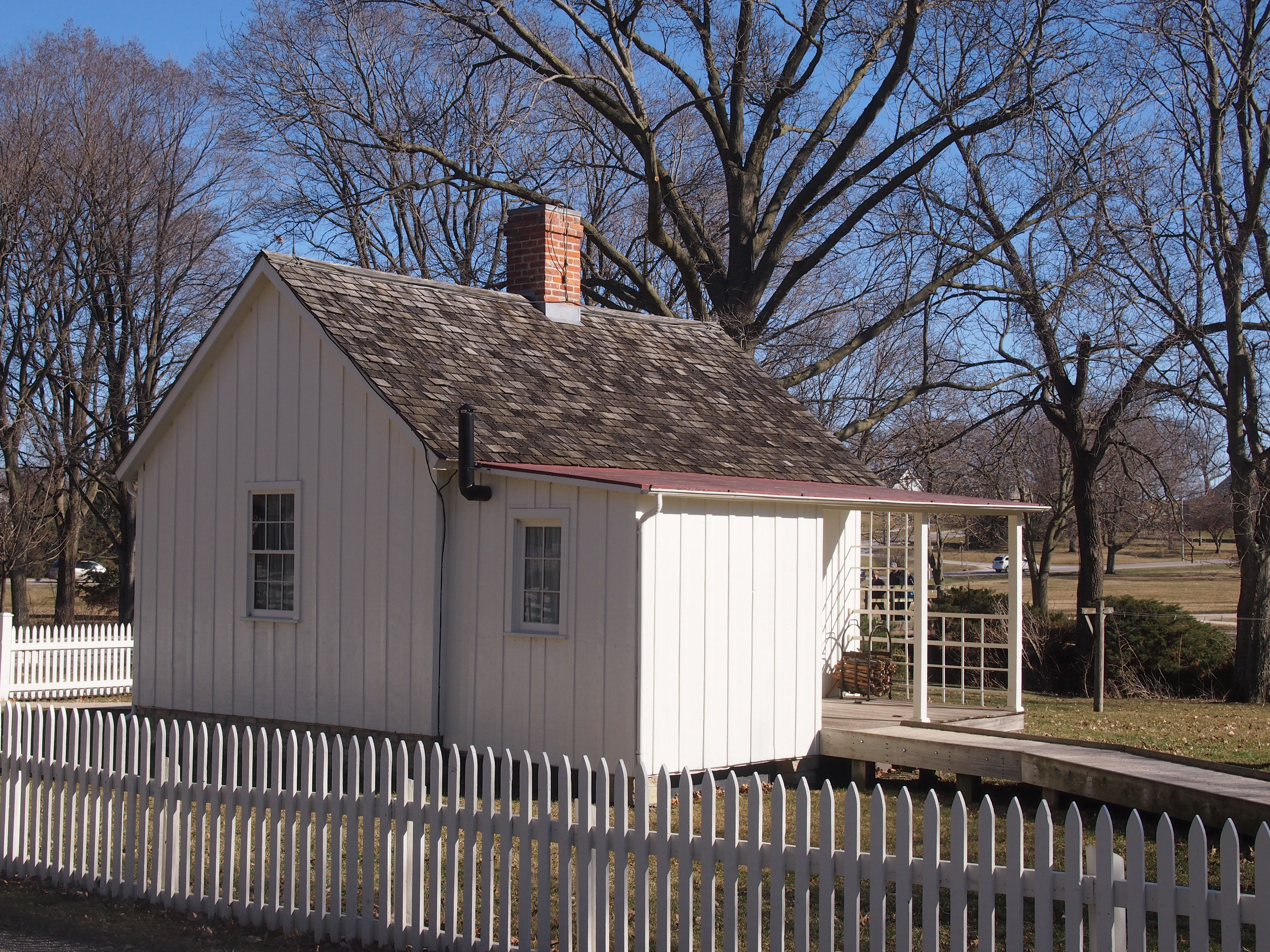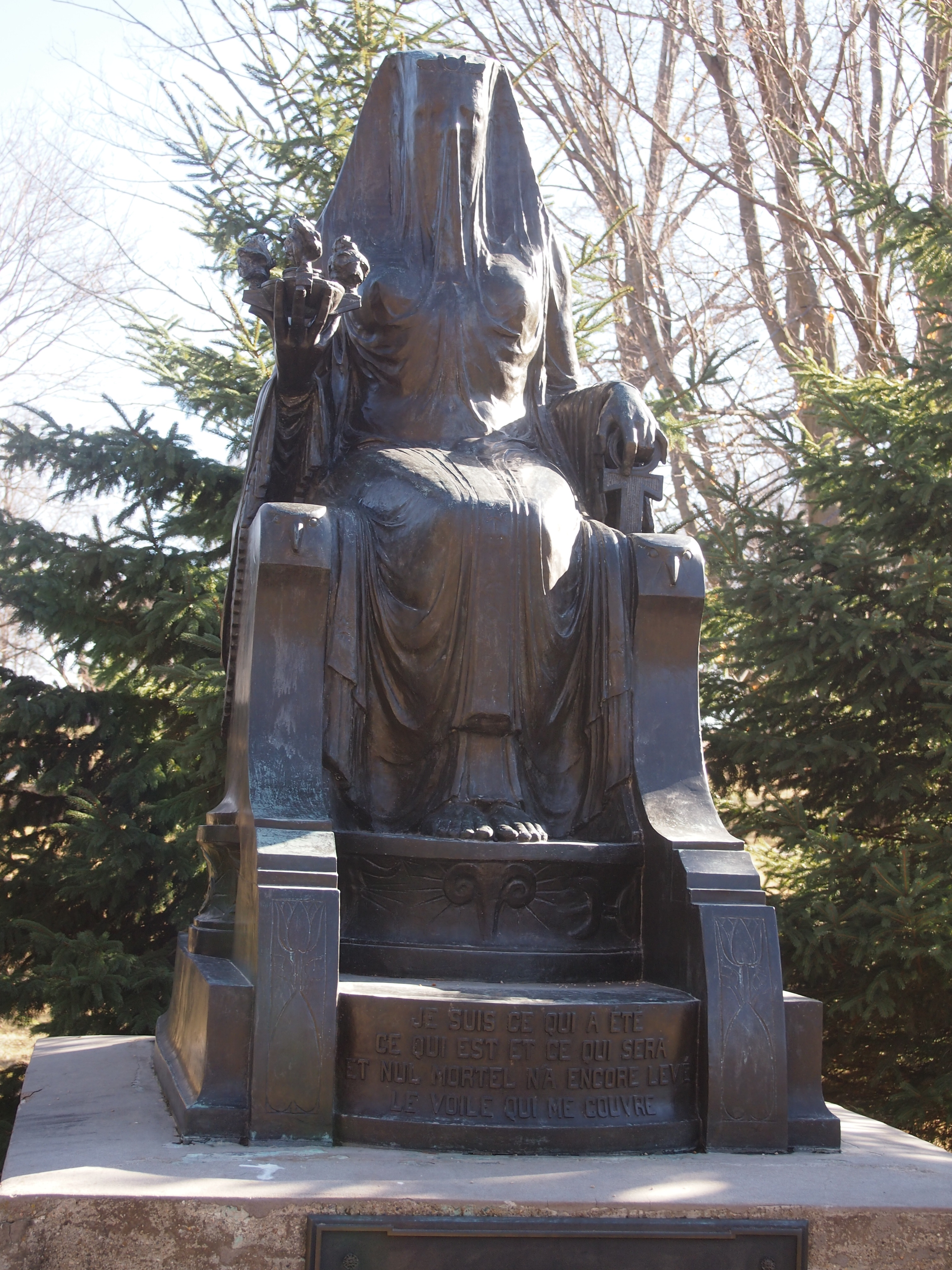Just off of I-80 in east-central Iowa is the town of West Branch, hometown of Herbert Clark Hoover. These days, you can visit the Herbert Hoover National Historic Site there, as we did on March 27.
Besides the museum and library, and the graves of President and Mrs. Hoover, the site includes a collection of 19th-century buildings moved from other parts of town to form a sort of young Hoover-era village: a half-dozen houses, a schoolhouse, Jesse Hoover’s smithy, a Friends Meeting House, and a barn. All of these were put in the vicinity of Hoover’s birthplace cottage, a two-room structure in which HH came into the world on August 10, 1874. It’s the only thing in the area that hadn’t been moved.
It’s a small place. Really small: 280 square feet.
 “Like any couple just starting out, 21-year old Hulda Minthorn and 23-year old Jesse Hoover were eager to have a place to call their own,” the NPS says about the cottage. “Shortly after their first wedding anniversary, and with the help of his father Eli, Jesse built this simple, but sturdy two-room cottage in the spring of 1871 on the corner of Downey and Penn streets.
“Like any couple just starting out, 21-year old Hulda Minthorn and 23-year old Jesse Hoover were eager to have a place to call their own,” the NPS says about the cottage. “Shortly after their first wedding anniversary, and with the help of his father Eli, Jesse built this simple, but sturdy two-room cottage in the spring of 1871 on the corner of Downey and Penn streets.
“Looking around this house, you may think the Hoover family was poor. But their prudent spending, strong work ethic, and resourceful ways were actually a reflection of their Quaker beliefs.” More about the cottage is here.
Across Hoover Creek from the cottage is a curious thing. A statue of Isis — the ancient Egyptian deity, that is. How many monumental statues of Isis are there in Iowa? Maybe just this one. How many anywhere? I couldn’t say, but I do know there’s one at the Herbert Hoover National Historic Site.
 “Considering Herbert Hoover’s Quaker upbringing, you might be wondering why there is a statue of Isis, ‘the Egyptian goddess of Life,’ sitting on the grounds of his birthplace,” says the NPS. “This bronze, seven-and-a-half-foot tall statue is the work of Belgian sculptor Auguste Puttemans [apparently his last work] and was a gift from the children, refugees, and soldiers of Belgium in gratitude for Hoover’s famine relief efforts on their behalf during the First World War.”
“Considering Herbert Hoover’s Quaker upbringing, you might be wondering why there is a statue of Isis, ‘the Egyptian goddess of Life,’ sitting on the grounds of his birthplace,” says the NPS. “This bronze, seven-and-a-half-foot tall statue is the work of Belgian sculptor Auguste Puttemans [apparently his last work] and was a gift from the children, refugees, and soldiers of Belgium in gratitude for Hoover’s famine relief efforts on their behalf during the First World War.”